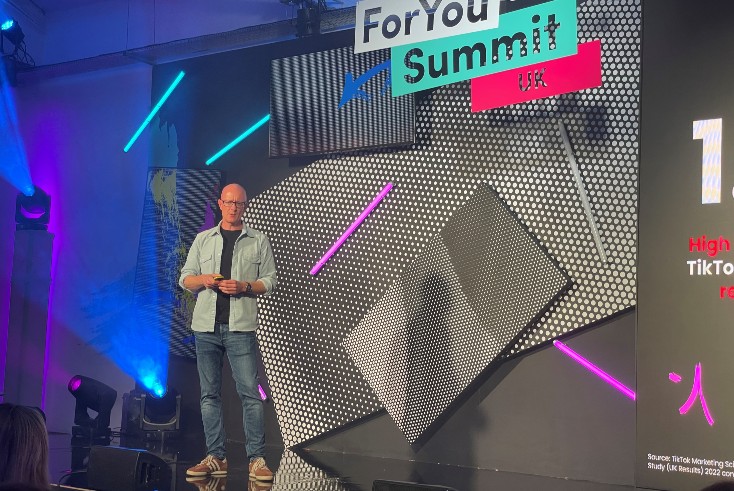TikTok measurement head: industry needs weaning off ‘last-click attribution’


“Views are the last true currency in the attention economy.”
Steve Lockwood, TikTok’s head of measurement, Europe & Israel, told a crowd at the short-form video company’s For You Summit in Shoreditch yesterday that measurement is still too caught up on attribution when a different measurement model would allow for a better understanding of the impact of ad viewership.
Lockwood pressed that TikTok’s For You page, which offers algorithmically curated content, is deeply personal. The implication being, the more personal an ad or content experience is, the more likely the user will find it entertaining and the more powerful the view is as an important piece of the measurement puzzle.
“The opportunity to engage with people with entertaining content and get huge scale in terms of number of views — some will get tens of millions of views in a matter of hours — it’s an opportunity to scale a message quickly,” Lockwood said, arguing in favour of TikTok’s unique viral potential.
That isn’t just true for creators, Lockwood argued, but for advertisers as well. Throughout the For You conference, a number of TikTok representatives emphasised the importance of making entertaining ad content on the platform in making a successful activation. The more entertaining an ad is, the more likely it is to be memorable and contribute to the overall user experience, they argued.
But how easy is it to measure that effectiveness? “From a measurement perspective, we’ve got a challenge in digital advertising, generally,” Lockwood admitted.
He argued strongly against last-click attribution measurement models, saying it fails to capture the entirety of advertising touchpoints throughout the digital journey before purchase. According to internal figures shared with the crowd, 79% of purchases TikTok claims it drives are not captured by last-click attribution, meaning that the measurement tactic could lead to an underinvestment in the likes of TikTok and other social-media companies.
This echoed a recent conversation at The Future of Media conference last month, where Adidas head of measurement Gordon Black expressed joy that the demise of the cookie is “leading to the death of attribution, which was so misunderstood and so often misinterpreted for so long.”
“We’ve moved on from a world with a single source of truth, where often the solution was digital attribution, which had so many faults [but] at least you could rely on it. Now you can’t even rely on it,” added Black.
Lockwood noted that advertisers are still spending far too much on last click attribution, suggesting that many are “still spending half of their revenue on pay-per-click advertising.”
“If any part of the journey is interrupted, it diminishes the likelihood that the conversion is going to get made,” said Lockwood. The problem with attribution, then, is that it allocates all the credit to the final touchpoint.
“Is that a fair distribution of credit?” he asked. “It just doesn’t make sense. If you think about any scenario where there’s an outcome that is preceded by a series of actions, it’s virtually impossible to think of an outcome that was exclusively driven by the latest prior event.”
As opposed to last click attribution, Lockwood prefers an “outcome-based” measurement model, which combines mixed-media modelling, incrementality, and still some attribution to give a more holistic view of the factors driving ad effectiveness.
That includes the number of views which contribute to a purchase down the line in the customer journey, which is complex and tends to involve a number of different social channels even if a user ultimately uses a search engine to find a product.
Lockwood argued: “When it comes to measurement, there’s no silver bullet and there never will be. A good source of truth still needs multiple inputs.”
